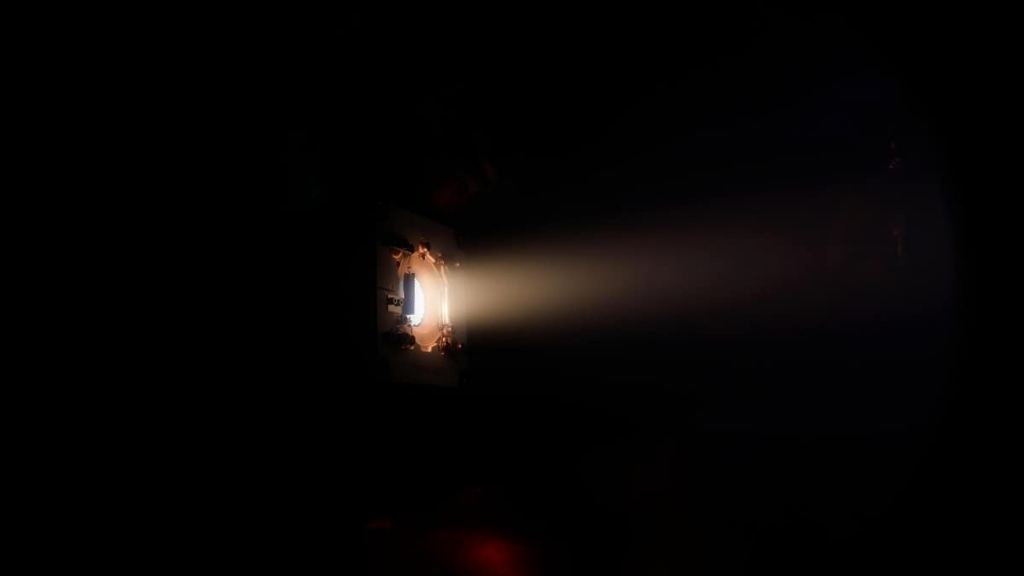Company Tests Iodine Thruster in Space for the First Time
By Andy Tomaswick
Ion thrusters have played second fiddle to chemical rockets for most of the history of space exploration. Part of that is because of their inability to launch payloads into orbit. But in space, their high thrust-to-weight ratio has plenty of appeal. Other features have held the technology back, including the difficulty of working with the thruster’s fuel source – xenon. Now, a team of engineers and scientists from ThrustMe, a French start-up that focuses on developing advanced propulsions systems, have developed an ion thruster that works on an entirely new and much easier to use material – iodine.
The thruster, called the NPT30-12, was fully flight tested on the Beihangkongshi-1 nanosatellite launched by Chinese company Spacety. Since its orbital insertion in November, the satellite has used its novel propulsion system to move in a set pattern that was then tracked from the ground and cross-referenced with expected propulsion system performance. The results were published in a recent paper in Nature and mark a milestone in the development of better ion thrusters.
Credit – CNRS YouTube Channel
Most of the improvements embodied in the NPT30–12 come from its novel fuel chemical. Iodine is much more stable than xenon, or krypton, another, though seldom used, ion thruster fuel. Its also much more abundant, and therefore less expensive. Xenon, which is only 1 part per 10 million concentration in the atmosphere, costs approximately $3000 / kg. Its other commercial use cases are limited, so scaling it for use in ion thrusters presents a chicken-and-egg problem. The thrusters won’t be widely adopted enough to make the price of fuel fall until the cost of the fuel itself is low enough to adopt ion thrusters widely.
Iodine offers an excellent solution to that problem by circumventing it all together. It has the added bonus of being much easier to store and handle than xenon, which requires 100-200 times atmospheric pressure to compress properly, compared to iodine’s ability to be stored unpressurized as a solid. That solid-state allowed ThrustMe’s team to pump 3x the storage density of fuel compared to xenon gas under pressure.

Credit – ThrustMe
With that level of fuel density, ThrustMe was able to shrink the entire ion thruster propulsion package into a 10 cm x 10 cm x 10 cm cube, easily affixable to many nanosats. But that small cube packs an incredible punch, with “performance enhancements” of up to 50% above the baseline for xenon.
While the company did not detail what those performance metrics might be in their press release, it is clear that iodine thrusters have been highly sought after for decades at this point. This first demonstration of it in situ in space has caught the attention of everyone from journalists to CubeSat manufacturers. Whether this potentially breakthrough technology becomes a mainstay option of space-based propulsion systems remains to be seen. But having more potential options for spaceflight is always better.
Learn More:
ThrustMe – World’s first demonstration of an iodine electric propulsion system in space
Nature – In-orbit demonstration of an iodine electric propulsion system
Phys.org – Iodine successfully tested in satellite ion thrusters
Space.com – Promising new electric iodine thruster passes key test in orbit
Lead Image:
Image of the NPT30-12 iodine thruster being tested in a vacuum chamber.
Credit – ThrustMe
The post Company Tests Iodine Thruster in Space for the First Time appeared first on Universe Today.

December 10, 2021 at 02:48AM
via Universe Today read more...

Post a Comment